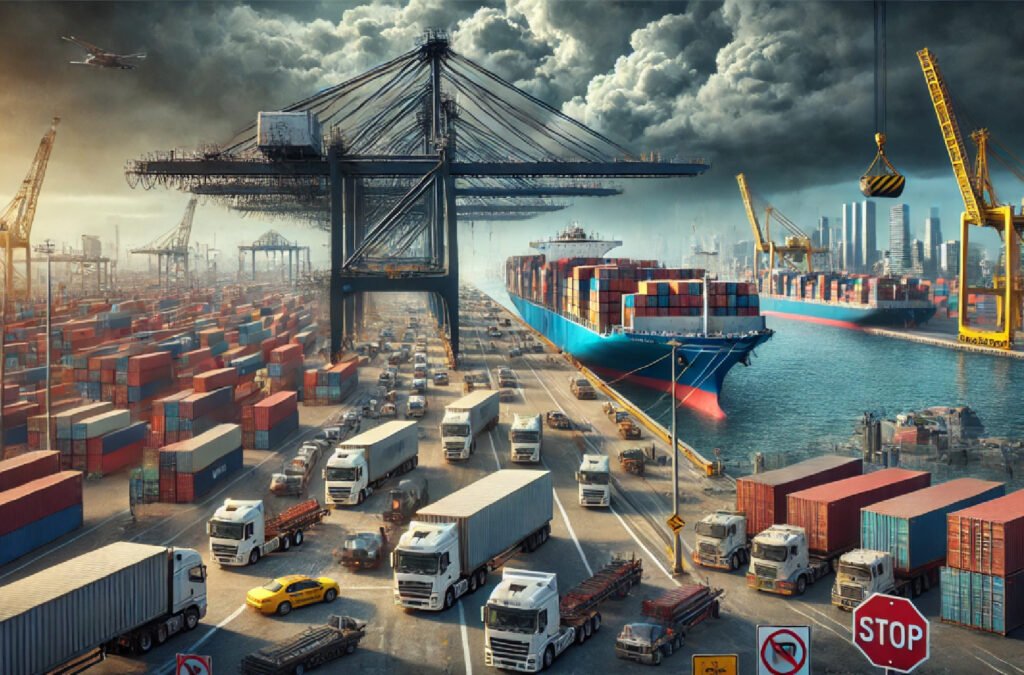Overcoming Supply Chain Disruptions: How Digitalization is Helping Companies Build Resilience

The global supply chain ecosystem has faced unprecedented challenges in recent years, from geopolitical tensions to the COVID-19 pandemic and natural disasters. These disruptions have exposed the fragility of traditional supply chains, forcing businesses to reconsider their approach to managing logistics, production, and inventory. In response, companies are turning to digital technologies to build more resilient supply chains, enabling them to respond faster to disruptions, optimize operations, and enhance decision-making. This blog explores how digitalization is helping companies overcome supply chain disruptions and ensuring that they can thrive in a rapidly changing business environment.
1. Real-Time Visibility and Tracking
One of the key ways digitalization is bolstering supply chain resilience is by providing real-time visibility into operations. Technologies like the Internet of Things (IoT), cloud computing, and RFID tags allow companies to track the movement of goods, monitor inventory levels, and gather data on environmental conditions such as temperature and humidity in real-time.
For example, in the shipping industry, companies like Maersk use IoT sensors embedded in containers to monitor shipments’ status throughout their journey. This data is integrated into centralized systems that give supply chain managers real-time insights into the movement of goods, allowing them to react swiftly to potential disruptions. If a shipment is delayed due to port congestion or bad weather, companies can adjust their logistics strategies to minimize delays and ensure goods reach their destination on time.
This real-time visibility also allows companies to quickly respond to unforeseen events, such as factory shutdowns, transportation delays, or sudden spikes in demand. By knowing the precise location and status of their products, businesses can reroute shipments, adjust production schedules, and communicate effectively with suppliers and customers to mitigate the impact of disruptions.
2. Predictive Analytics for Proactive Decision-Making
While traditional supply chains rely on historical data to plan operations, digitalized supply chains are powered by predictive analytics that anticipate disruptions before they occur. By using machine learning algorithms and big data, companies can analyze trends, patterns, and external factors—such as weather conditions, political instability, and demand fluctuations—to predict potential bottlenecks and disruptions.
Take the example of DHL, which uses predictive analytics to foresee potential disruptions in their logistics operations. By analyzing data from past shipping routes, port activities, and even weather forecasts, DHL can anticipate delays and adjust their strategies accordingly, rerouting shipments or allocating additional resources to avoid bottlenecks.
This proactive approach allows businesses to minimize risks, avoid costly delays, and optimize their entire supply chain. In industries like retail, where maintaining optimal inventory levels is crucial, predictive analytics can prevent stock outs by forecasting demand and ensuring that warehouses are stocked with the right products at the right time.
3. Blockchain for Transparency and Trust
Supply chain transparency has become a top priority for many businesses, especially in sectors where product safety and authenticity are critical, such as food and pharmaceuticals. Blockchain technology is playing a pivotal role in enhancing transparency by creating immutable, tamper-proof records of every transaction along the supply chain.
For example, Walmart has adopted blockchain to track food products from farm to shelf. This allows the company to trace the origin of products in seconds, reducing the risk of contamination and ensuring product safety. In the event of a food recall, Walmart can quickly identify the affected batches and remove them from the shelves, minimizing damage to its reputation and maintaining customer trust.
Blockchain also improves supply chain resilience by fostering trust among partners. Suppliers, manufacturers, and retailers can all access the same verified information, reducing the risk of fraud and errors. This transparency creates a more collaborative and trustworthy environment, allowing companies to work together more effectively in times of crisis.
4. Automation and AI for Enhanced Efficiency
Automation and artificial intelligence (AI) are key drivers of supply chain resilience, enabling businesses to streamline operations and respond more quickly to disruptions. Automation tools such as robotic process automation (RPA) and autonomous vehicles reduce reliance on manual labor, making supply chains more efficient and less vulnerable to workforce shortages.
In manufacturing, AI-powered robots can be programmed to quickly adapt to changes in production needs. For instance, during the COVID-19 pandemic, many manufacturers shifted their focus from non-essential goods to essential items like personal protective equipment (PPE). AI systems allowed them to reconfigure their production lines swiftly, helping them meet surging demand without significant downtime.
AI also plays a role in optimizing inventory management and warehouse operations. Amazon, for example, uses AI-driven robots to automate the picking and packing process in its warehouses, reducing the time it takes to fulfill orders. This speed and efficiency are crucial during peak periods, such as Black Friday or holiday shopping seasons, where disruptions can have significant financial consequences.
Building a Future-Ready Supply Chain
As global supply chains become more complex and unpredictable, digitalization offers a path toward greater resilience. Technologies such as real-time tracking, predictive analytics, blockchain, and automation are not just improving supply chain efficiency but also helping companies respond proactively to disruptions.
For businesses looking to build future-ready supply chains, adopting digital technologies is no longer optional—it's essential. By leveraging these tools, companies can mitigate risks, enhance operational efficiency, and ultimately thrive in an increasingly volatile business landscape.
Join the Supply Chain Digitalization Conference to learn more about how industry leaders are using cutting-edge technologies to overcome disruptions and build resilient, future-proof supply chains
